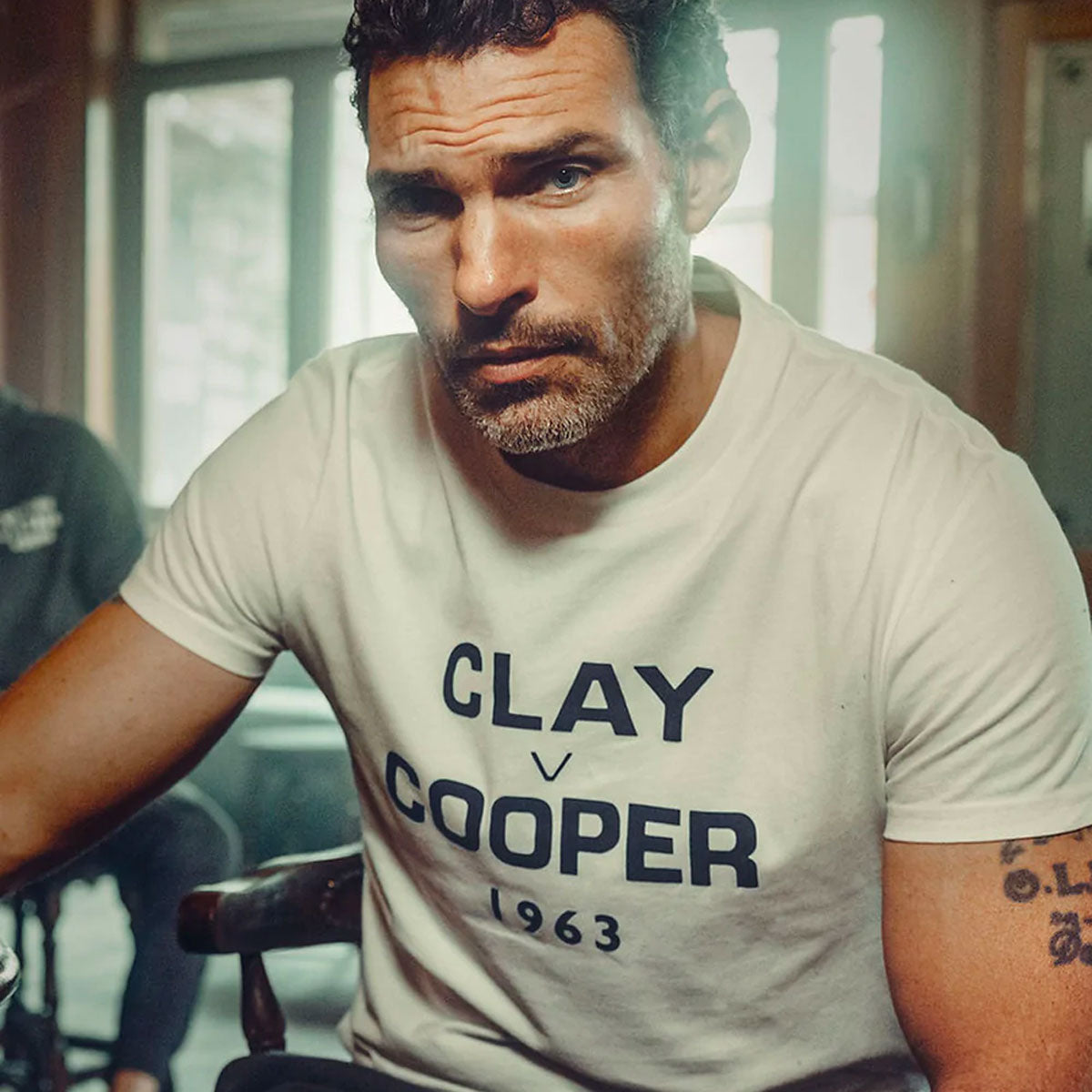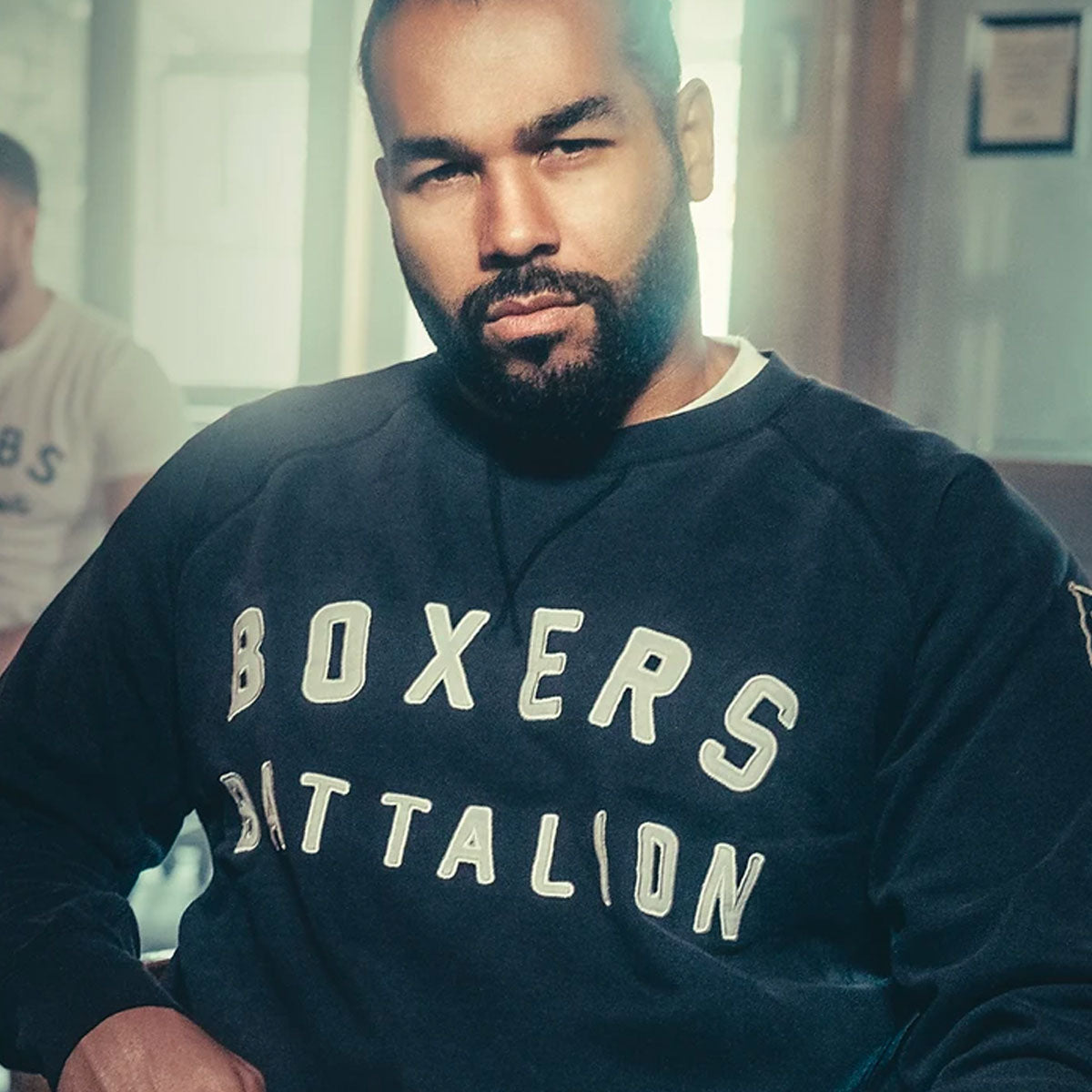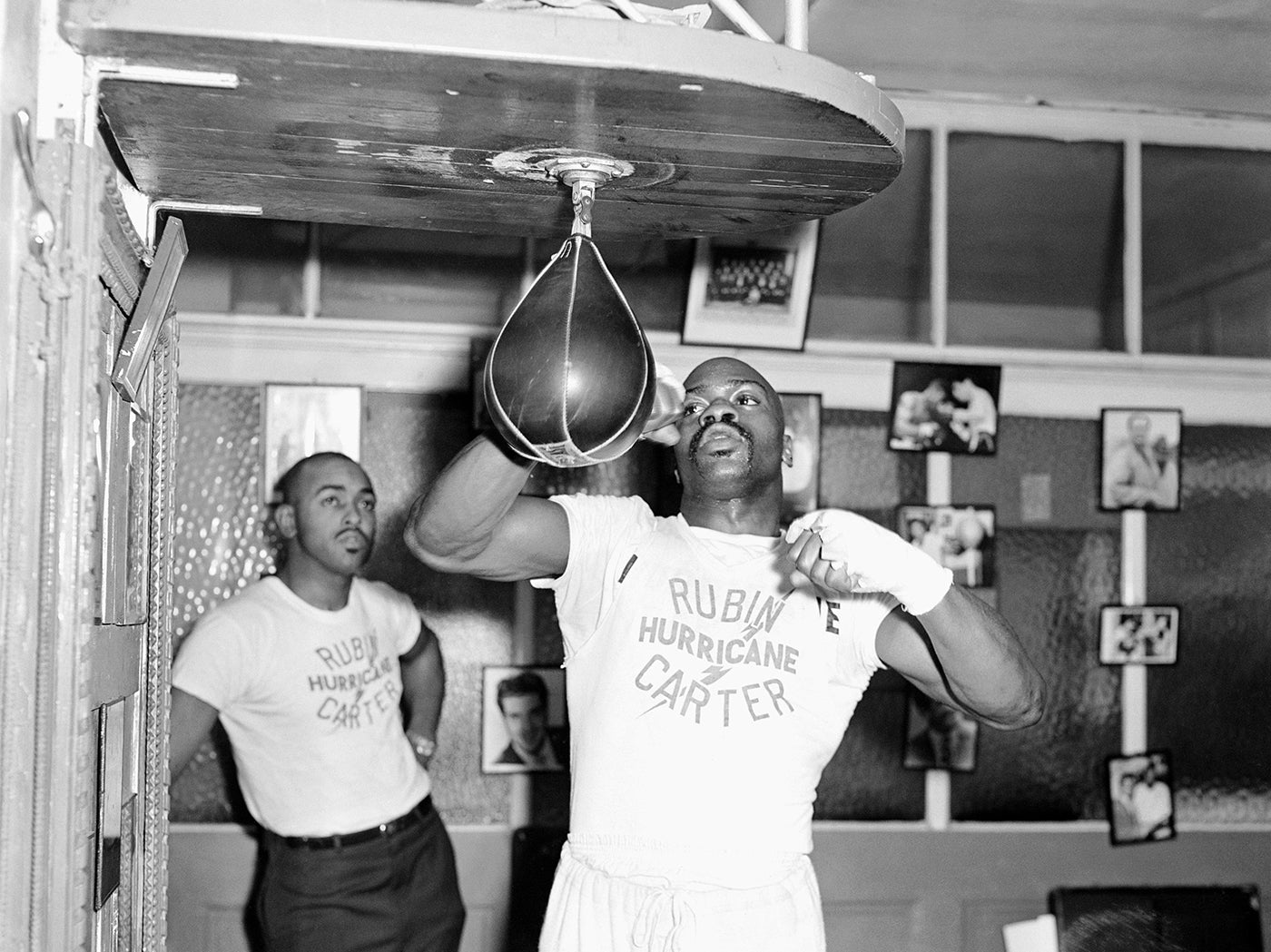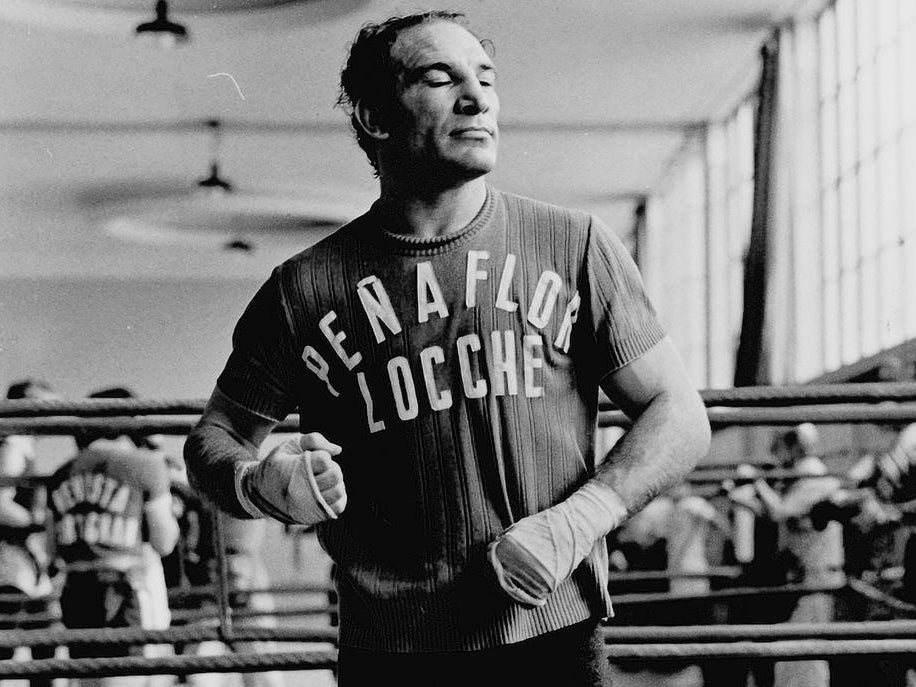In 241 fights, William Guglielmo Papaleo lost 11 bouts, boxed 1,956 rounds, racked up 65 stoppages and is engrained in history as a two-time world champion. He’s referred to by many as the best featherweight of all time and he’s also referred to as ‘Pep,’ due to his teachers at school struggling to pronounce his surname. The name stuck, as did his jab.
Born to Sicilian migrants, Salvatore and Mary on 9 September 1922 in Middletown, Connecticut, Pep grew up in tough times, living in an apartment void of heating. Helping to make ends meet during the 1930’s depression, Pep used to deliver newspapers and shine shoes. From a young age, he was picked on for being the smaller kid, but the bullies soon became scarce after the future champion took up boxing to defend himself.
As Willie started to fight in the amateur ranks, his parents made it very clear they were not fans of boxing. However, when a young 98lbs Pep told his father that he was getting paid the equivalent of his weekly salary for one fight, his father’s response was, ‘Can you get two fights a week?’
Based out of the Du-Well Athletic Club in Norwich, Connecticut, Pep fought 65 times as an amateur boxer, losing only three contests. In 1938, with about 20 straight wins behind him he became flyweight champion of Connecticut. At this stage, Pep weighed 105lbs and his next fight was in Norwich, Connecticut against a much taller and bigger, weighing 126lbs. Pep was very concerned and expressed this to his manager, who calmly reassured him, ‘Willie. If he was any good, he wouldn’t be fighting you.’ The opponent totally dominated Pep for the full three rounds. Who was he? The one and only, Sugar Ray Robinson. Undeterred by the loss, Pep moved up in weight and in 1939 became the bantamweight champion of Connecticut.
By now the lure of the professional game and all its financial trappings pushed Pep to hang his amateur gloves up. On 25 July 1940 at the Bulkeley Stadium in Hartford, Connecticut, 17-year-old Pep had his debut against Joey Marcus, beating his fellow debutant on points over four rounds. 
Willie Pep vs Chalky Wright 1942
Winning his next 52 fights over the following 28 months, on 20 November 1942, 20-year-old Pep challenged Chalky Wright for his New York State Athletic Commission (NYSAC) world featherweight title at Madison Square Garden. After 15 rounds, all three judges gave Pep the decision by a wide margin. The illusively brilliant Pep said in an interview years later, ‘He was a great champion. He knocked everybody out, but if he don’t hit you, he don’t knock you out. So, I made sure he didn’t hit me! I boxed him for 15 rounds and as long as he didn’t hit me, I didn’t get hurt.’
Three weeks later Pep returned to the ring, stopping Jose Aponte Torres in seven rounds, then clocked up a further seven victories over the next three months, bringing him to an incredible 62-0 in a little over two and a half years since his debut. However, it was at this stage of his career he encountered his first loss against world lightweight champion, Sammy Angott. Pep was a natural featherweight, having only touched 130lbs twice prior to this contest, while Angott was a natural 135lb lightweight who went on to campaign at full blown welter. Although the lighter man by five pounds, Pep put on a very good performance, losing a razor thin decision on the cards over 10 rounds.
Despite being world featherweight champion, the National Boxing Association (NBA), refused to recognise Pep as the champ as he held the NYSAC version. The NBA’s 126lbs champion was Sal Bartolo and until Pep defeated him, a grey area remained in terms of championship legitimacy.
On 9 April 1943 Pep beat Boston’s Sal Bartolo via split decision in his own backyard of Boston. As a result of the close decision, only two months later they rematched once again in Boston, but this time at the Braves Field. Undeterred by the home support, Pep put on a more definitive performance, winning confidently over 15 rounds and in doing so cementing his position as undisputed world featherweight champion. He would not lose his crown until 1948.
From 1943-1947, Pep was a busy man. The featherweight sensation served in the U.S. Navy in 1943 before being honourably discharged in 1944 and he also served in the U.S. Army in 1945. On the boxing front, after the Bartolo rematch, from April 1944 – December 1946, in his next 44 fights, Pep won 43 and drew one, bringing his tally to 109-1-1. Victories during that stretch included Phil Terranova and a knockout of Sal Bartolo in their rubber match.
Finishing 1946 in destructive fashion with a third round knockout of old foe Chalky Wright, Pep found himself in the fight of his life with his first opponent of the following year. On Jan 8 1947, boasting a record of 108 victories, one draw and one loss, world champion Pep was flying from Miami up to Connecticut when the light aircraft he was travelling in ran into a snowstorm. Pep was asleep at the time of the crash, which killed three and left 18 injured, including himself. The featherweight sensation broke his back in a number of places, shattered his left leg and was consequently put in a body cast. Boxing greats Rocky Marciano and Marcel Cerdan perished in plane crashes, but Pep was incredibly fortunate to survive and took his second chance in life by the throat. Despite being told he would never fight again, six months later he was back in the ring. In fact, he went on to fight a further 19 years and 131 contests.
On 17 June 1947, Pep returned to the ring and against all the odds, embarked on a 25 fight winning streak over 15 months, including a tenth round stoppage over Humberto Sierra, in a contest refereed by heavyweight icon, Jack Dempsey.
On 29 October 1948 at Madison Square Garden, Pep took on one of the toughest and destructive 126lbs fighters in history, Sandy Saddler. Instead of leaning on his boxing skills, Willie chose to stand toe to toe with the Boston native who would finish his career with 104 knockouts in 145 victories. Pep’s plan backfired emphatically and he was floored in the third round and stopped in the fourth. The Wisp said afterwards, ‘He was a tough son of a gun, Sandy and gave everyone trouble, including me.’
Despite being advised not to take the rematch so soon, four months later on 11 February 1949 back at Madison Square Garden, the pair locked horns again. After a pitch perfect performance over 15 rounds, Pep reclaimed his title with a wide points victory. The contest was Ring Magazine’s Fight of The Year for 1949. 
Willie Pep vs Sandy Saddler 2 - 1949 (Water colour by American illustrator John Cullen Murphy
After regaining his title against Saddler, Pep went on to win his next 16 contests, defending his title a number of times against decent competition, including Eddie Compo and Ray Famechon. Saddler in the meantime won the world lightweight title but was fully focused on winning back the 126lbs strap.
Once again Saddler burst Pep’s bubble. On 8 September 1950 at Yankee Stadium, New York the pair fought the rubber match in front of 39,000 people. Despite hitting the canvas in the third round for a count of nine, by the end of the seventh, Pep was comfortably ahead on all three judges’ scorecards. Alas, the Connecticut native dislocated his shoulder and was unable to come out for the eight session. Saddler was declared the winner once again. 
Willie Pep vs Sandy Saddler 3 - 1950
Pep went into 1951 with strong intentions of regaining the strap again. After winning eight fights in eight months, on 26 September they met for the fourth and final time at the Polo Grounds, New York. Despite being ahead on two of the judges scorecards, after eight very scrappy rounds, Pep had to retire due to a very deep laceration under one of his eyes, which had allegedly been caused by a thumb from Saddler. The contest turned into a street fight and wrestling match, and consequently both fighters were suspended for a number of weeks. Pep recalled, ‘Sandy Saddler and I fought a number of times and were known as very colourful fighters. What I mean by that is that we used to bleed all over the ring.’ Over the years, the duo struck up a close friendship and after retirement they went on tour promoting exhibitions and after dinner tales.
Despite reaching contender status on a number of occasions over the coming years, Pep was unable to regain his world title again. On 26 January 1959, with a record of 220-9-1, ‘The Wisp,’ took a battering from Venezuelan, Sonny Leon in Caracas. Hitting the canvas three times over the 10 round distance, Pep retired soon after the fight.
Pep staged a comeback in 1965 as a lightweight, mainly for financial reasons due to his gambling habit and lack of investment over the term of his career (albeit he did manage to buy his parents a house with his initial purses). After winning nine fights in seven months against nondescript opponents, Pep dropped back down to featherweight on 16 March 1966 and lost to journeyman Calvin Woodland on points over six rounds. The loss confirmed Pep’s decision to hang the gloves up permanently this time. In an interview with Angelo Dundee years later, Pep reflected on the latter part of his professional boxing journey. ‘All my career I had bad hands and I couldn’t understand it. Then I realised, the referee kept stepping on them.’
Connecticut’s favourite fighting son stayed close to the sport he loved, refereeing a number of contests, acting as a second for various fighters and working for the Connecticut Boxing Commission as an inspector for a decade. Due to cashflow issues, Pep took on a number of jobs to pay the bills, including a restaurant greeter, managing a nightclub and even holding the position of deputy sheriff at a criminal court in Hartford.
Standing at a touch over 5ft 5inches, Pep possessed incredible footwork, phenomenally fast hands, could parry punches, throw 10 jabs on the bounce, hook off the jab and avoid getting hit. All within about five seconds. As Alexander G. Skutt and James B. Roberts once said, ‘His style of boxing has been likened to tap dancing with gloves on.’ With 229 wins in 241 contests and holding the world featherweight strap for most of the 1940’s, it was no surprise when he was inducted into International Boxing Hall of Fame 1990
Pep married six times and was survived by four of his children. Writing legend, Bert Sugar once said of Pep. ‘He will tell you he has a refrigerator, a car and a wife. And they’re all working.’ Of his marriages, Pep once said, ‘My first five wives were good housekeepers. Each of them kept the house when she left.’
Pep died on 23 November 2006 from complications relating to dementia pugilistica, aged 84. He was buried at Rose Hill Memorial Park, Rocky Hill, Connecticut. The inscription on his headstone reads, ‘The Champ.’
Paul Zanon, has had 11 books published, with almost all of them reaching the No1 Bestselling spot in their respective categories on Amazon. He has co-hosted boxing shows on Talk Sport, been a pundit on London Live, Boxnation and has contributed to a number of boxing publications, including, Boxing Monthly, The Ring, Daily Sport, Boxing News, Boxing Social, amongst other publications.






